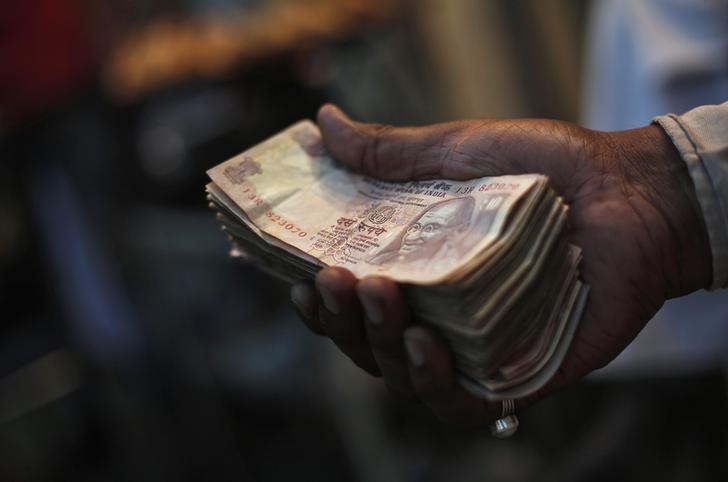(Bloomberg) -- India’s monetary policy committee displayed its independent streak, flagging inflationary risks from an expansionary federal budget and shifting toward a more hawkish bent.
With the government increasing rural and farm sector spending to assuage angry voters, the central bank said worsening public finances could crowd out private investments and send borrowing costs higher. While it kept its overall stance neutral, one of the six-member committee gave up his rate cut call while another voted for a 25 basis-point increase.
One year from a national election, the statement’s tone raises the prospect that monetary and fiscal policies will be pushing in different directions with the central bank needing to keep a lid on prices while the government seeks to stimulate economic growth from a four-year low.
“This policy has told the government they will have to reap the harvest of what they’ve sown," said Mohan Guruswamy, chairman at New Delhi-based Centre for Policy Alternatives. "It seems like the RBI has finally got its mojo back. From a time when they went with the government on everything including demonetization, they seem to have gone back to drawing clear lines -- ‘I make monetary policy, you make public policy.’ It’s a welcome sign."
The benchmark repurchase rate will stay at 6 percent, the Reserve Bank of India said on Wednesday, as predicted by 32 of 33 economists in a Bloomberg survey. Its neutral stance brought relief to the bond market, which has endured the worst sell-off in two decades.
Fiscal Slippage
Referencing Finance Minister Arun Jaitley’s budget -- which widened its deficit target to 3.3 percent for the financial year 2019 after missing the 2018 goal -- Governor Urjit Patel said the shortfall along with rising global yields was one of the factors that had led to a sharp rise in sovereign bond yields in recent weeks.
"Apart from the direct impact on inflation, fiscal slippage has broader macro-financial implications, notably on economy-wide costs of borrowing which have already started to rise. This may feed into inflation," the RBI said in a statement.
Inflation for April to September is forecast at 5.1 percent to 5.6 percent and is expected to ease to 4.5 percent to 4.6 percent for the second half, although risks are tilted to the upside. The RBI is committed to keep headline inflation close to 4 percent over the medium term.
It also expects gross value added -- a key measure of growth -- to increase 7.2 percent next fiscal year from 6.6 percent this year.
Nevertheless, the RBI’s forward looking surveys showed that there was enough slack in the economy, with capacity utilization at 71.8 percent in the second quarter of 2017/18. Consumer confidence also remained in the pessimistic zone, although there were signs that the worst was over. Household inflation expectations, meanwhile, remained elevated, underlining the RBI’s hawkishness.
Borrowing Plan
The yield on the benchmark 10-year bond fell four basis points to 7.53 percent, paring their advance this month. Sovereign notes have entered their seventh month of selloff, the longest losing streak since 1998. The rupee fell 0.1 percent to 64.2850 per dollar on Wednesday, taking its decline this year to 0.6 percent.
“With rates already having risen so much, so quickly, the RBI’s stance seems to have provided some respite for India government bonds,” said Eugene Leow, a fixed income strategist at DBS Group Holdings Ltd. in Singapore. Leow doesn’t expect a sustained rally in bonds.
|
What our economists say... Bloomberg Economics’ view is that both inflation and growth will undershoot the RBI’s projections in the year ahead -- tilting the monetary policy committee back in favor of further easing by June.-- Abhishek Gupta said in a note |
The RBI is sandwiched between the need to keep borrowing costs low -- as the government’s debt manager it has to sell a near-record $95 billion of bonds in the year starting April 1 -- as well as curb prices.
"There’s a lot of inflationary bias in the budget and they have highlighted it. That is fairly significant," said Madan Sabnavis, chief economist at Care Ratings Ltd. in Mumbai.
(Updates with currency in paragraph under Borrowing Plan sub-headline.)
